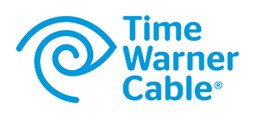
Esteves
Time Warner Cable is spending less to maintain and improve services for residential customers even as broadband usage grew 40-50 percent, redirecting spending on its business services division instead.
Irene Esteves, chief financial officer of Time Warner Cable, told attendees at Morgan Stanley’s Technology, Media & Telecom Conference that the growth in the company’s capital spending is associated with serving business, not residential customers.
Esteves reported that spending on residential services was actually down slightly in the last year. The business services division used its increased capital to wire 100,000 office buildings and provisioned 1,900 cell towers with backhaul service last year.
But despite decreasing costs, Time Warner Cable expects to continue increasing broadband prices, primarily because it can.
“What we have found is […] as customers use it more, value it more, we can then price it more,” said Esteves. “And we think that’s a terrific dynamic for the market for quite a bit of time.”
Powering usage growth more than anything else is online video.
“If we look at peak volume, which is really what drives our capacity planning, 66% of that increase comes from streaming video,” notes Esteves. “Again, the more they use it, the more they love it, the more important we become to them as a service provider. So we’re continuing to watch that usage pattern and cheering them on.”
For traditional television viewing, Time Warner’s march to digital will also carry on, but it will happen slowly.
 Time Warner Cable has chosen a gradual transition to IP video for cable television service. Subscribers can expect about a dozen channels per year to be removed from analog service until the cable system offers a completely digital television package. In Maine and New York City, that digital transition is already complete.
Time Warner Cable has chosen a gradual transition to IP video for cable television service. Subscribers can expect about a dozen channels per year to be removed from analog service until the cable system offers a completely digital television package. In Maine and New York City, that digital transition is already complete.
“We’re taking a more measured approach over a 5-year time period,” said Esteves. “We’re taking [away] analog channels in the 10 to 12 per year kind of measure, which is less disruptive to our customers and less capital-intensive.”
That kind of transition, coupled with annual rate increases, could potentially alienate customers, but Time Warner has retrained its retention specialists to assuage customers headed for the door.
“With the increasing promotional activity in the marketplace, we have more and more of our customers on promotion and it’s imperative that when the [promotion expires], we’re being very thoughtful about who rolls off to what, when,” said Esteves. “We’re training specialists to talk to customers, listen to them, find out the reasons for potentially leaving and recapturing those.”
But the industry is also under pressure from Wall Street to cut promotional activity and stop discounting service excessively, because it gets customers used to a lower price.
“If you think about the promotional prices in the marketplace, that really drives people to price shop and that just increases the transactions and the turmoil in the industry, which increases everyone’s cost and reduces everyone’s profitability,” Esteves said. “So the real conundrum for the entire industry is how do we each build on our retention rather than build on the promotional side in order to keep our customers and become more profitable.”
 The cable provider’s Turbo High Speed Internet increased earlier this year from 20 to 30Mbps for downloads. Its Lightning tier went up even more — from 40 to 60Mbps. Even Business Class customers saw speed increases to 70Mbps. But now prices are up as well — as much as $5 a month more for “upgraded broadband services,” a higher cable modem rental fee, and $3 more for television packages:
The cable provider’s Turbo High Speed Internet increased earlier this year from 20 to 30Mbps for downloads. Its Lightning tier went up even more — from 40 to 60Mbps. Even Business Class customers saw speed increases to 70Mbps. But now prices are up as well — as much as $5 a month more for “upgraded broadband services,” a higher cable modem rental fee, and $3 more for television packages:

 Subscribe
Subscribe
 Time Warner Cable has chosen a gradual transition to IP video for cable television service. Subscribers can expect about a dozen channels per year to be removed from analog service until the cable system offers a completely digital television package. In Maine and New York City, that digital transition is already complete.
Time Warner Cable has chosen a gradual transition to IP video for cable television service. Subscribers can expect about a dozen channels per year to be removed from analog service until the cable system offers a completely digital television package. In Maine and New York City, that digital transition is already complete. Time Warner Cable subscribers in Wisconsin are facing the third rate increase since October 2012.
Time Warner Cable subscribers in Wisconsin are facing the third rate increase since October 2012. Broadcast cable: From $16.19 to $17.99
Broadcast cable: From $16.19 to $17.99
 Most existing clients have already had the benefit of a promotion on sign-up. As with all promotions, including the current new client promotions, they run for a limited time and the discounts they offer expire. We do have loyalty programs in place for existing loyal clients and we do offer existing clients the new promotions in cases where they may not have received anything when they signed up.
Most existing clients have already had the benefit of a promotion on sign-up. As with all promotions, including the current new client promotions, they run for a limited time and the discounts they offer expire. We do have loyalty programs in place for existing loyal clients and we do offer existing clients the new promotions in cases where they may not have received anything when they signed up.